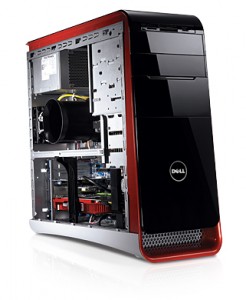It’s only been a quarter into year 2009 when Microsoft had awakened to realities of the simple things on the web. Like e-mail.
As of March 12, 2009, POP3 access is now available to Hotmail users WORLDWIDE.
When you set up Hotmail in the e-mail program on your PC or mobile device, you may be asked for the following information:
POP server: pop3.live.com (Port 995)
POP SSL required? Yes
User name: Your Windows Live ID, for example yourname@hotmail.com
Password: The password you usually use to sign in to Hotmail or Windows Live
SMTP server: smtp.live.com (Port 25)
Authentication required? Yes (this matches your POP username and password)
TLS/SSL required? Yes
As you can see, in about 10 – 15 years Microsoft will add IMAP support. Stay tuned.
On the other hand, if you simply check Google, you will see that:
@aol.com and @aim.com (those poor souls who got themselves an AIM instant messenger) total around 350 million results
@live.com yields about 281 million results
@hotmail.com – 325 million results
which totals around 600 million
@yahoo.com – 1.48 billion resuls (first place so far)
@gmail.com and @googlemail.com in total produce well below 200 million results.
Or in other words, second largest e-mail provider has just realized that people may want to check their e-mails outside of the flashy advertising interface. Personally I have abandoned Hotmail a long time ago because the loading times were awful (compared to any other web mail back then) and all the advertisements were so in-your-face that I barely saw actual messages. Of course, Firefox was in early alpha (if that), there was no AdBlock plugin and Hotmail simply refused to work in any other browser except Internet Explorer. Add to this the fact that my Hotmail ID was even more popular target for spam then one with Yahoo and spam blocking options were largely non-existant… well, let’s just say I have logged into Hotmail today for the first time in three years. The ID was still alive primarily because of a few services that were tied into it, like MSN messenger, Webmaster Tools and MSDN subscriptions.
Of course, you may want to argue (at least those of you who paid attention during Outlook initial startup) that Microsoft had long availed checking Hotmail/Live.com e-mails from Outlook and Outlook Express. Guess what? I only been using Outlook since 2007, I have been using a lot of other e-mail clients before. Even more so now, I use Outlook from home and Thunderbird on the go. And all my work-related messages are copied into Google account (both received AND SENT!). All this have been done using IMAP/SMTP. Which Microsoft, probably, hadn’t researched yet in their version of Civilization game they’re playing. Which is, honestly, surprising, given the advances the company makes with operating systems and developer tools.
Staying tuned for company’s response, there were a lot of requests for IMAP as far as I know…
 There’s a brand new thing I just tried. Having around 16 years of IT experience under my belt (out of 14 years of official work experience overall) I just did something I haven’t done in a long long time. I just ordered a brand-name PC. I did bought two or three custom-built PCs before at computer fair, but never ever in my life did I purchase a brand-name desktop before. All my PCs were custom-built, from carefully researched and hand-picked components. But there’s something I have realized recently.
There’s a brand new thing I just tried. Having around 16 years of IT experience under my belt (out of 14 years of official work experience overall) I just did something I haven’t done in a long long time. I just ordered a brand-name PC. I did bought two or three custom-built PCs before at computer fair, but never ever in my life did I purchase a brand-name desktop before. All my PCs were custom-built, from carefully researched and hand-picked components. But there’s something I have realized recently.